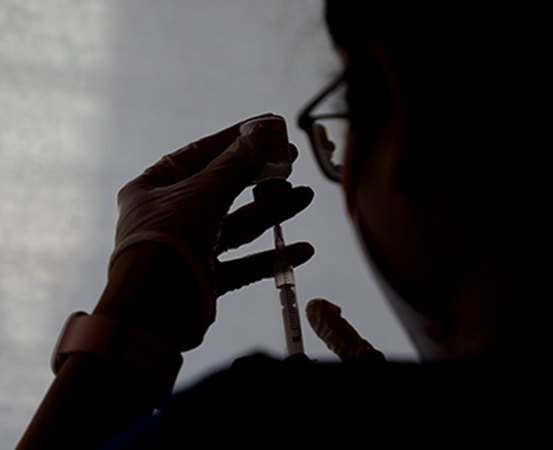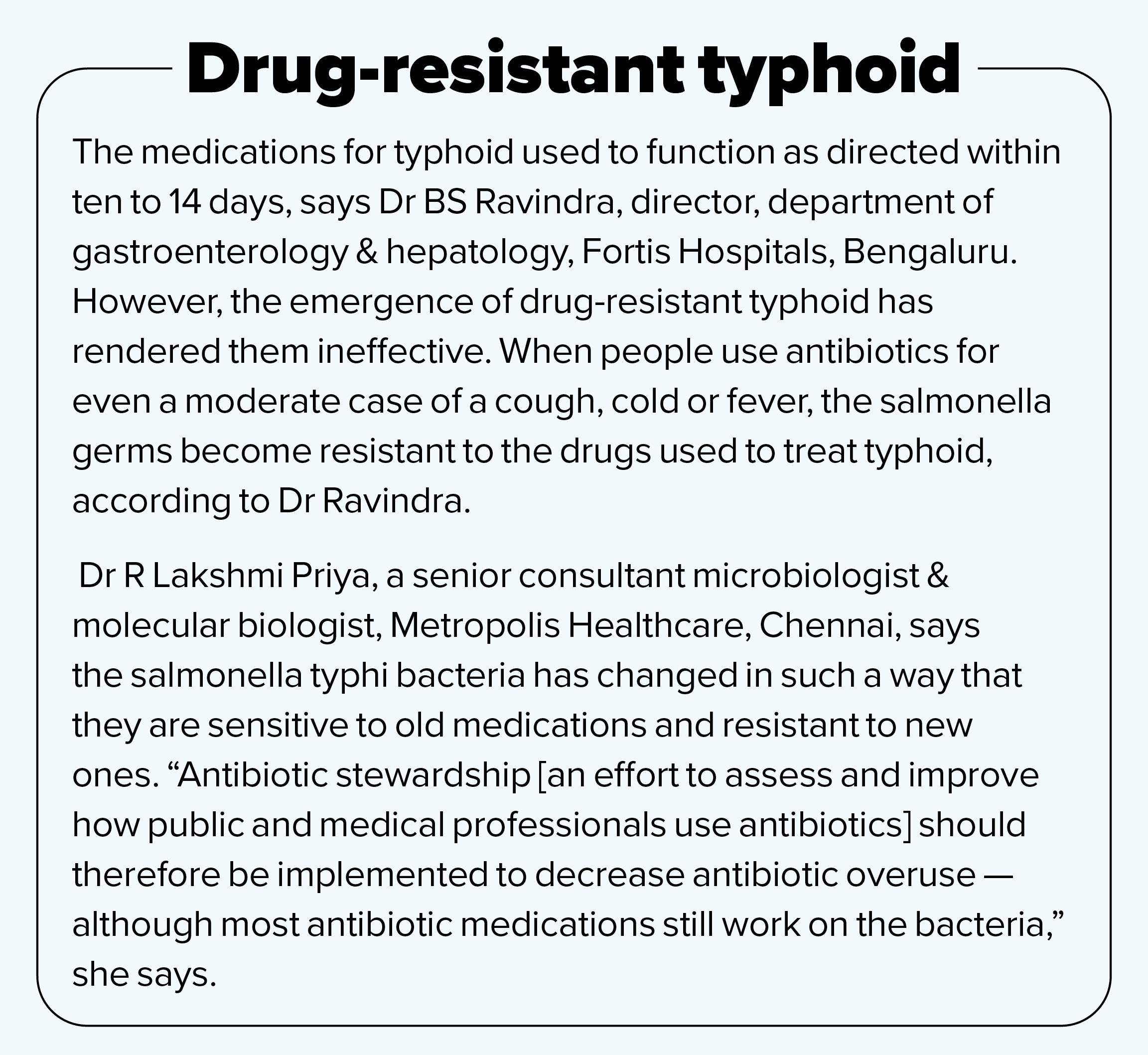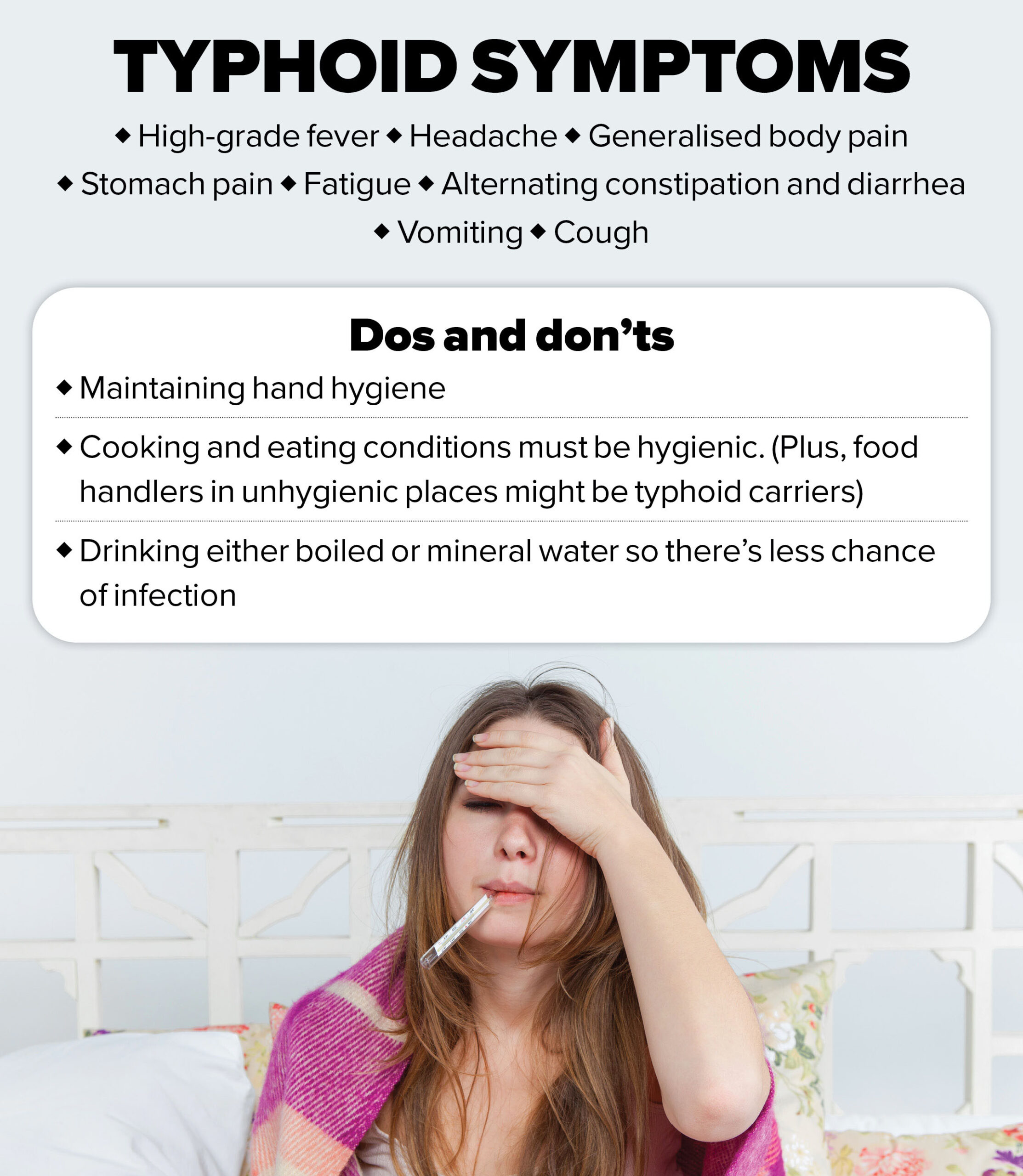
Vacations are supposed to be relaxing, but a trip to a hill station last year soon went downhill for Theepthi Jayakumar, a 23-year-old UI designer from Coimbatore, Tamil Nadu.
She came down with high fever just a day into her holiday. “I thought it must be seasonal changes,” says Jayakumar. “But when I came back home, my fever got worse [and I was] heavily fatigued.”
Tests showed Jayakumar had both covid and typhoid. Her general fatigue worsened, and it took her two weeks to recover from typhoid.
READ MORE :
The dangers of paracetamol overuse
Chronic chikungunya: pain that ties down for months
Why platelets decline during viral infections
The boy who runs like the wind
This doctor broke the AIDS story before the US govt
Food and typhoid
Typhoid is the primary reason parents restrict children from having street food. “Typhoid is an infection that spreads through contaminated food and water in unhygienic conditions,” Dr R Lakshmi Priya, a senior consultant microbiologist & molecular biologist, Metropolis Healthcare, Chennai, tells Happiest Health.
She says it stems from the salmonella enterica bacteria which causes two types of fever: typhoid caused by salmonella typhi and paratyphoid caused by salmonella paratyphi.
Krupa (full name withheld on request), a 26-year-old native of Bengaluru, was recently laid low with diarrhea, vomiting and constipation. “I have always had a weak gut, so I was taking medications for what I thought was food poisoning,” she says. But Krupa’s symptoms got progressively worse. “I was fatigued, lost appetite and felt nauseated, which I accounted as work stress. But when I got high-grade fever and severe headache, I knew it wasn’t food poisoning.”
She was diagnosed with acute typhoid fever. “I was on IV due to dehydration as I couldn’t keep any food and fluids inside me,” she says. “The fever went down after a few days, and I have got better. Although I remain fatigued, I am getting better and am on complete rest now.”
Testing for typhoid
Dr BS Ravindra, director, department of gastroenterology & hepatology, Fortis Hospitals, Bengaluru, says different weekly tests are done to understand the prevalence of salmonella (illness caused by salmonella bacteria). According to him, antibody tests detect IgG and IgM antibodies produced in response to typhoid infection. IgM positive indicates an acute infection (an active infection) and IgG positive indicates an old infection (memory of the antibody in people who have recovered).
Experts told Happiest Health the following tests are done to check for typhoid:
- Blood culture test: usually a minimum of two tests are done to confirm the prevalence of bacteria — one before and the other after taking antibiotics
- Typhidot rapid antibody test: done in the second week after diagnosis
- Widal antibody test: done within six to seven days after the onset of fever, or in the third week
- Stool or urine culture test: done in the fourth week. Also done to diagnose typhoid carriers (asymptomatic people who carry the bacteria in their urine or stool).
Typhoid complications
“After two to three days of getting exposed to the bacteria, the affected person can start showing symptoms, and these are most seen in children and young adults,” says Dr Lakshmi Priya.
Dr Ravindra lists out some complications that can occur as typhoid progresses:
- ulcers in intestine
- intestinal perforation
- meningitis
- development problems in the bones.
Treating typhoid
According to Dr Lakshmi Priya, if someone is not vaccinated or if the infection is undiagnosed and left untreated, it can lead to severe complications such as perforation and hemorrhage.
“There are antibiotics available that work on the DNA of the bacteria by disintegrating or killing their cell membranes,” says Dr Ravindra. “It takes about seven to ten days for one to recover, but can also [take] up to two weeks.”
He stresses the importance of following a proper course of antibiotics since typhoid can recur if inappropriately treated. “If the duration of antibiotics treatment is not accurate, or the right type of antibiotics is not prescribed, then the bacteria doesn’t die,” says Dr Ravindra. “They can remain in the bloodstream, the intestine or in the bone marrow, and then tend to come back to cause typhoid again in about two to three weeks’ time after initial recovery.”

Preventing typhoid
The US Centers for Disease Control and Prevention mentions two types of typhoid: inactive (injection) and live (oral). It also cautions that the typhoid vaccine is not 100 per cent effective and is not a replacement for eating and drinking responsibly.
“There’s a new typhoid vaccine that provides longer immunity, called the typhoid conjugate vaccine,” says Dr Lakshmi Priya.



















One Response
More information on typhoid vaccines would have been helpful